3 Reasons You Should Be Paying More Attention Towards Backlinking In 2020
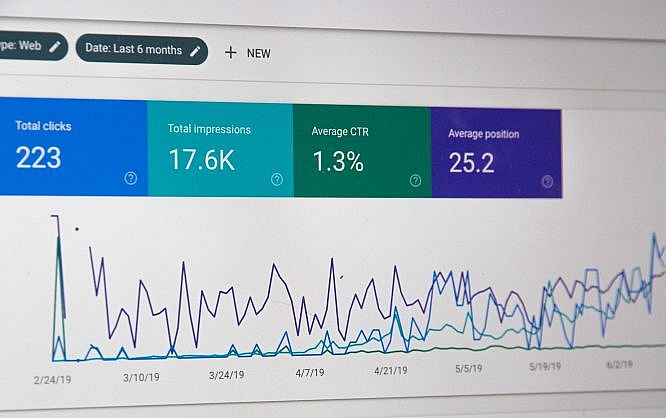
An age-old SEO tactic, link building is simply the process of getting other relevant sites to link back to your web pages. As a digital marketer, you are probably guilty of either undermining the importance of link building or putting it on the backburner assuming the process to be time-consuming and complex.
Well, it’s time you get rid of any such misapprehension as backlinking is more relevant today than it ever was. All good things take time and effort and building your backlinking strategy from scratch is no different. However, once you’ve set the ball rolling, you’re going to watch some of your critical content marketing and SEO metrics skyrocket like never before.
Don’t fret if you’re a little confused about the nitty-gritty of how exactly backlinking is useful. Allow us to break it down for you.
So, why is link building important?
Google algorithm considers it as a huge factor in determining your SERP ranking
Among several other important factors, Google uses backlinks as a major determinant in deciding the ranking of webpages. This essentially means that if your webpage has received a good amount of backlinks from multiple other relevant sites, you are likely to rank higher than your competitor that does not have any backlinks. In fact, as per the observations on Google algorithm’s ranking factors made by First Page Sage, 16% weight is given to backlinks.

Therefore, if you work on steadily building a network of backlinks for each of your critical web pages and blogs, they will rank way higher in SERP for your target keywords and drive much more organic traffic. You slowly get to improve your site’s discoverability without making any change in the content. Backlinks are simply an indicator for Google that a particular webpage has been referenced by multiple other authoritative sites, therefore it deserves a higher search ranking.
Another important thing to note here is that improving your search engine ranking is not merely a function of the volume of backlinks you receive, but also the quality of those backlinks. Quality of a backlink is determined by a plethora of factors including, the domain authority, relevancy, and credibility of the site you receive the backlink from, and the uniqueness of the anchor text.
Therefore, if you receive a backlink from a highly credible source (thought leader in the industry) with impressive authority, you are more likely to rank higher as opposed to one from a random site not relevant to your business. Let’s say if all other factors are the same between two pages, the quantity and quality of backlinks received can make a whole lot of difference in their Google ranks. Also, one backlink from a highly authoritative domain is worth more than several links from bad ones.
Backlinks improve your site’s credibility and authority
If various sites are linking out to your webpages, Google, as well as consumers, take it as a sign of high authority and credibility. You get established as a thought leader in the field if multiple other relevant sites consider you worthy enough to be linked in their content. You not only drive more referral traffic but also have higher chances of converting visitors who landed on your page from another credible source as they start considering you as an industry expert.
Think blogs like HubSpot or Neil Patel’s. One reason why they have the credibility and authority they do is that every second blog post on internet marketing links out to either of them. So, every time you come across a statistic that is sourced from either of these blogs, you are hardwired to believe that it’s accurate and trustworthy.
Backlinks are an indicator of the relevancy of your page’s content
No webpage or blog is going to link out to your content if it is outdated as it would only decrease their credibility. Therefore, backlinks are a clear indication that the content of your page is fresh and relevant till date. This especially works magically in case you receive a backlink for your blog post from 5 years ago. You now know that it stands relevant even today and if you monitor your analytics, you might even observe its ranking improve with an increase in the number of backlinks.
As a rule of thumb, you must revisit your previously published content and update it regularly so it has higher chances of being linked to as opposed to content that is once created and never updated or overhauled.
Now that we’ve discussed why backlinks are important, let’s also look at how you can create such powerful content that attracts backlinks.
How to get backlinks to your webpages
Create valuable, share-worthy content
While it sounds straightforward, it's important to reiterate that your site content forms the foundation of your backlinking strategy. The kind of content you put out determines the quality of backlinks you attract and therefore, your primary focus must be on creating authoritative and share-worthy content. Make sure your blog posts are in-depth, cover a wide range of topics, and are based on primary as well as secondary research. If your posts don’t offer enough value, you cannot expect others to link out to you and so creating extremely high-quality, SEO-friendly content that ranks well on search engines will help you get discovered by those creating similar content and looking to quote or link to content from experts.
Taking inspiration from HubSpot, you can create your very own content checklist that you refer to for each post to ensure that it meets all quality standards and is share-worthy.
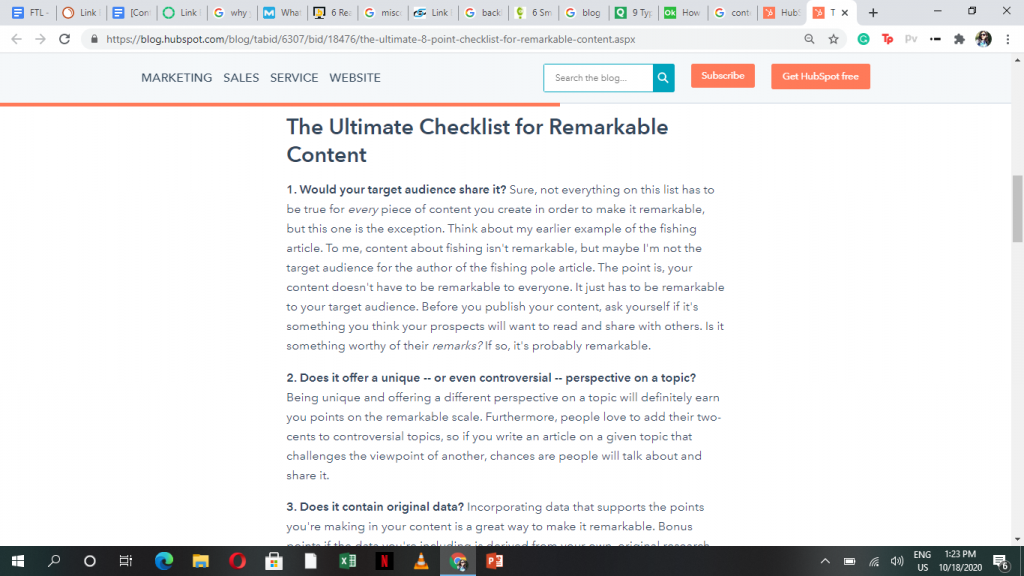
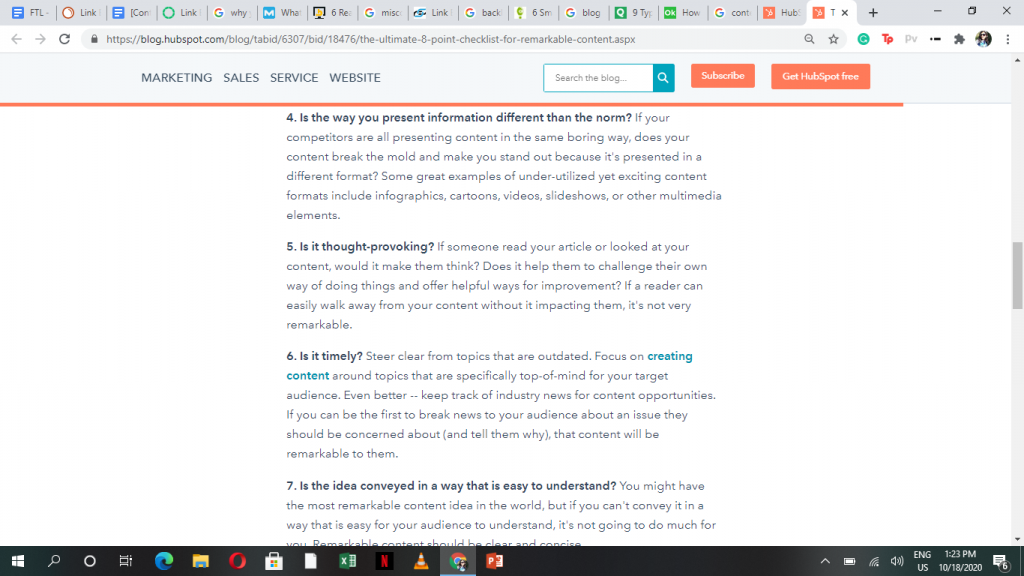
Enrich your content with data points and statistics
Needless to say, data points have higher chances of being picked up and quoted by other sites to back their content or opinions. Therefore, enriching your content with figures based on primary or secondary research will substantially improve the page’s chances of receiving a backlink. Make it a point to back your content with statistics and highlight them while sharing your blog posts on social media, to make it explicit that your posts are well-researched.
HubSpot often publishes posts that revolve only around stats, which makes them extremely shareable and snackable. Here’s an example:
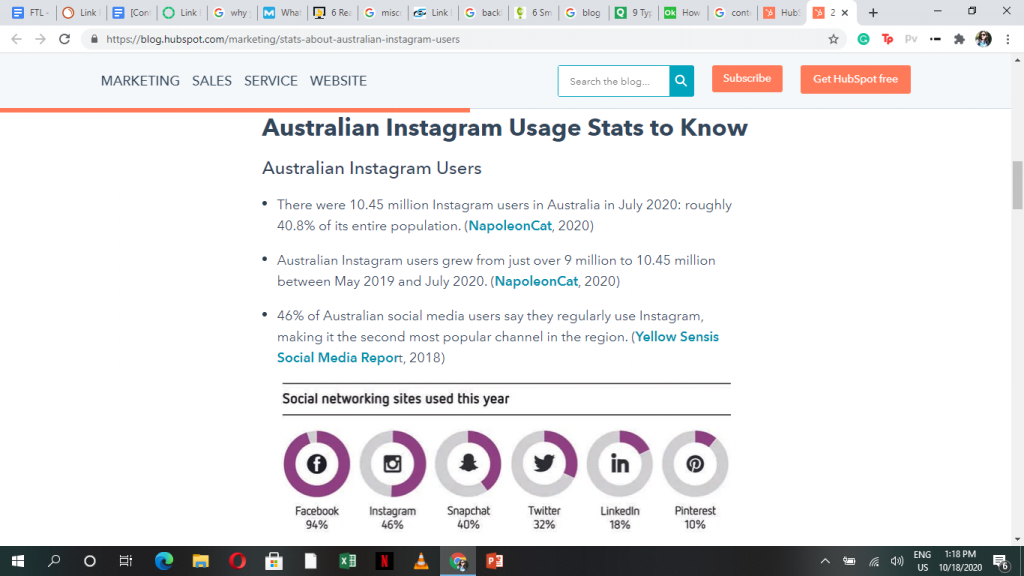
Supplement your pages with appealing visuals
Enough has been said about the power of visuals in improving a page’s engagement or ease of content consumption. What is often ignored is that visuals are also high share-worthy. Marketers often look for detailed illustrations or graphics from high authority sites that they can reference for their own content, thereby giving your page a backlink. Experiment with alternate content formats such as infographics, charts, and graphs since they have extremely high chances of being linked back to as they contain data and are easily consumable.
Here’s an example of an infographic by Venngage that beautifully illustrates the topic:
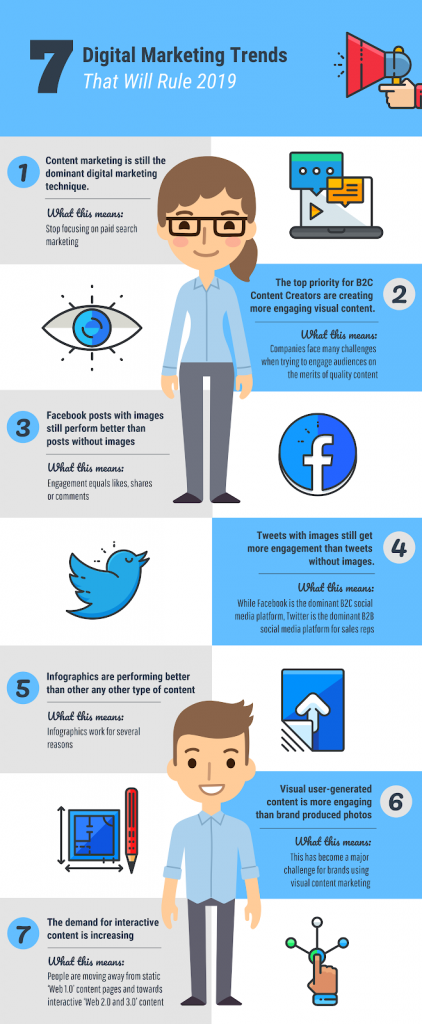
Therefore, wherever possible, make sure you include innovative and appealing visual elements in your pages and blog posts and also assign them proper Alt texts so they are easily discoverable via a Google image search.
Double down on list posts
Second, only to infographics, a study by BuzzSumo confirmed that list posts are one of the most shareable formats of content. This is most likely because list posts are easily digestible and evoke curiosity, while the title instantly reveals the time commitment required from readers. Think about it. Wouldn’t you be less inclined to read this blog post had it been titled ‘Why You Should Be Paying More Attention Towards Backlinking in 2020’? The number in the headline is a promise of something highly specific, which attracts readers owing to its predictability.
Therefore, make sure you include a decent number of list posts in your monthly content plan and share them extensively on social media.

Network aggressively on LinkedIn
Staying active and networking extensively with folks from your industry will ensure you are updated with the ongoings and never miss out on an opportunity to collaborate for link building activities. For instance, if you provide SEO services and notice someone in your network share a blog post on ‘Top SEO consultants to consider in 2020’, you can always send them a quick message suggesting they include your company’s name on their list.
Moreover, ensure you have a solid social media strategy at your disposal wherein you post and target each of your content pieces so they reach the right audiences and attract likely linkers.
Don’t shy away from cold reach out
Whether it is bloggers, journalists, or branded content creators, don’t hold back from reaching out to people who are likely to link back to your site. A simple Google search for your business’ relevant keywords will direct you towards these prospects.
Once done, you can dig up their email ids using tools such as Meerkat.link, Scrab.in and FindThatLead and send them personalized messages suggesting them to include your content in one of their pages or blogs and give you a backlink. The trick is to craft your email to ensure that you highlight the benefit they are going to receive by linking to your post. You could even go a step ahead and suggest a link exchange activity for mutual benefit wherein your page links back to one of their posts and vice versa.
Here’s an example of a simple cold email you can send out to receive mentions and backlinks from other blogs:
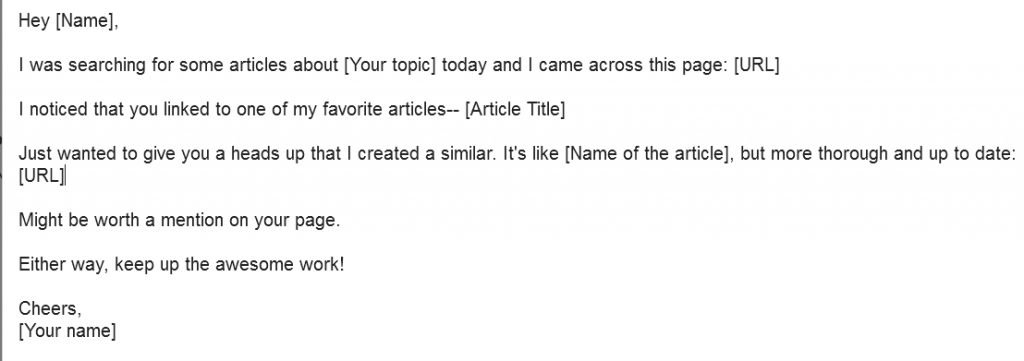
Finally, think of link building as a long term activity
Don’t be fooled into believing that you can reap the benefits of link building in a few weeks. Backlinking is a long-term goal that ensures your content remains relevant, fresh, and keeps driving traffic and conversions on your site. Backed by strong content marketing, social media, and distribution strategies, link building is not all that hard if you keep at it with perseverance and have an eye out for opportunities that might be lurking in plain sight.
Photo by Stephen Phillips - Hostreviews.co.uk on Unsplash
